Day Trips in Southern California

Ready to unplug from the daily routine and take a day trip from the city? Well, you are in the right place! Southern California is a region of sunshine, diverse landscapes, and endless attractions, making it perfect for unforgettable day trips. From family-friendly outings to romantic escapes and active adventures, Southern California has no shortage of incredible places to explore in a single day. Here are the trips I recommend, and I hope you’ll enjoy them too.
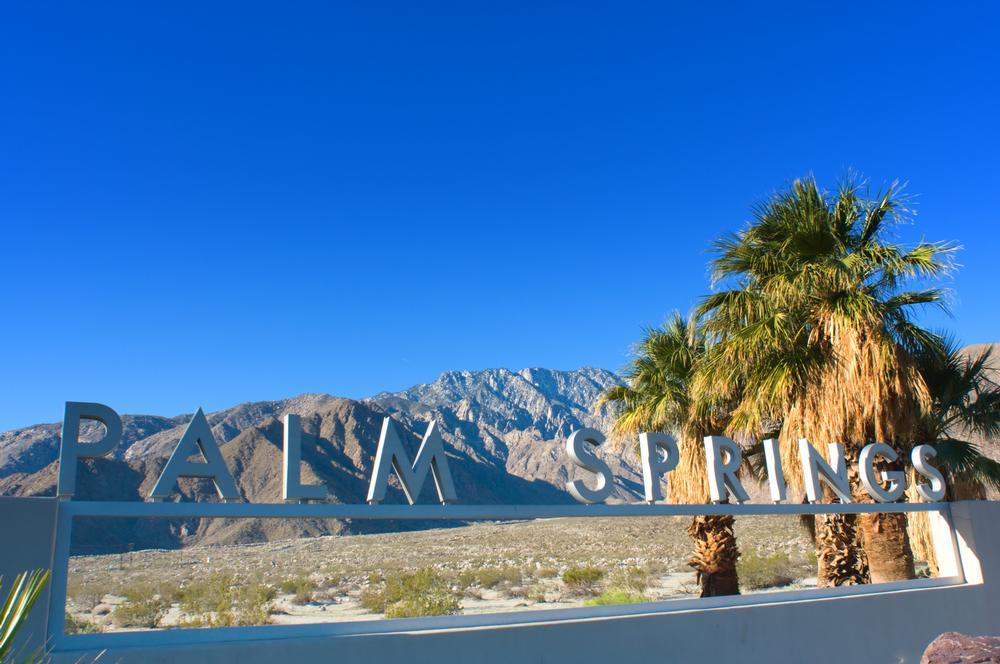
1. Palm Springs
This place has always felt like one of the absolute best day trips in Southern California, just a short two-hour drive east of Los Angeles. Nestled near the dramatic San Jacinto Mountains, it’s a desert gem that somehow feels both retro-cool and refreshingly modern all at once.
I love how the city is filled with vibrant mid-century architecture, colorful murals, and the coolest boutique shops that make wandering around a joyful adventure. The magic here is that you can lounge poolside under swaying palms in the morning and then ride the Palm Springs Aerial Tramway in the afternoon for spectacular mountain views for two hours.
Foodies will find endless choices, from stylish desert dining at Workshop Kitchen + Bar, celebrated for its modern American menu and industrial-chic setting, to poolside elegance at Melvyn’s Restaurant & Lounge, a classic haunt once favored by Hollywood legends. For casual bites, grab brunch at Cheeky’s.
If you’re staying overnight, 5-star Parker Palm Springs won the prestigious AAA Four Diamond award so you can trust that it's a quality hotel. Our room for two days was very luxurious and I loved the lush gardens and a timeless retro vibe.
We loved our meal at Chef Tanya’s Kitchen in Palm Springs, a 100% vegan restaurant (we even picked up some sandwiches to go).
- Location: Southern California, in the Coachella Valley of Riverside County, east of Los Angeles surrounded by the San Jacinto Mountains
- Map & Directions
What I loved best:
One of my favorite things to do is explore the hidden desert gardens and trails nearby. Joshua Tree National Park is less than an hour away, which makes this day trip even more exciting—you get two amazing destinations in one.
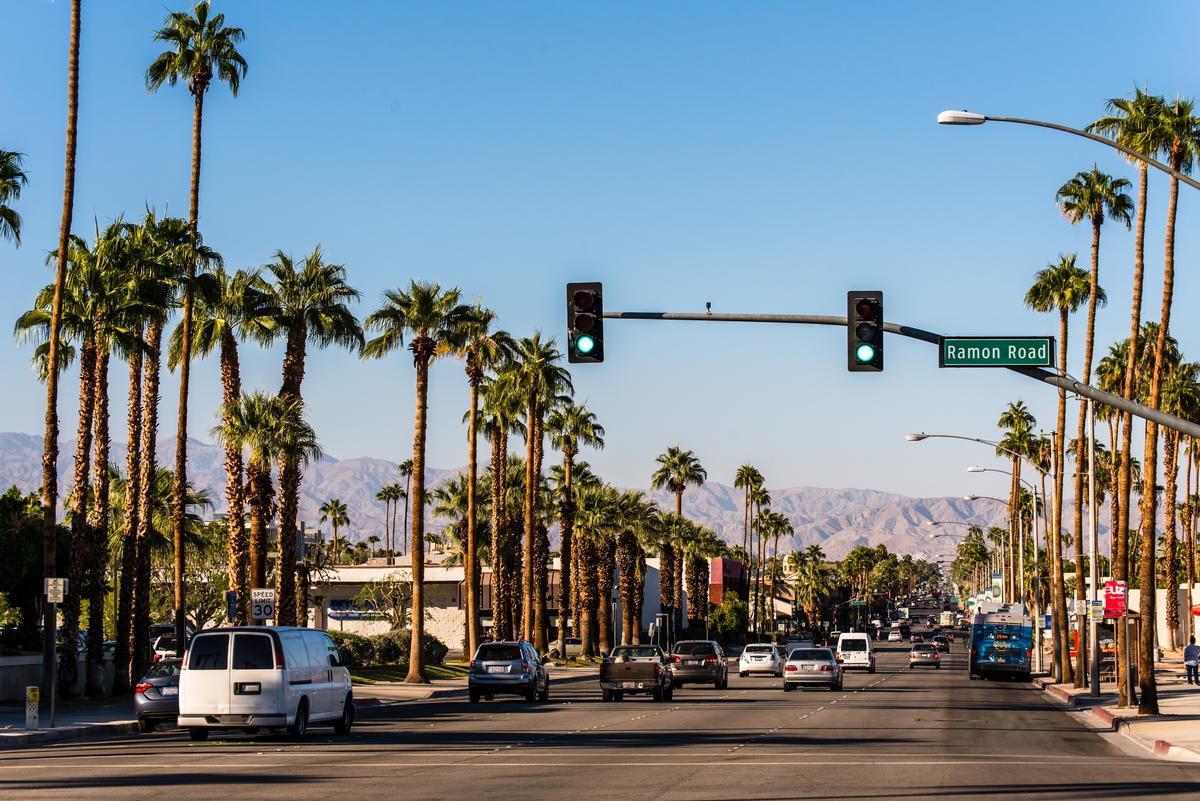
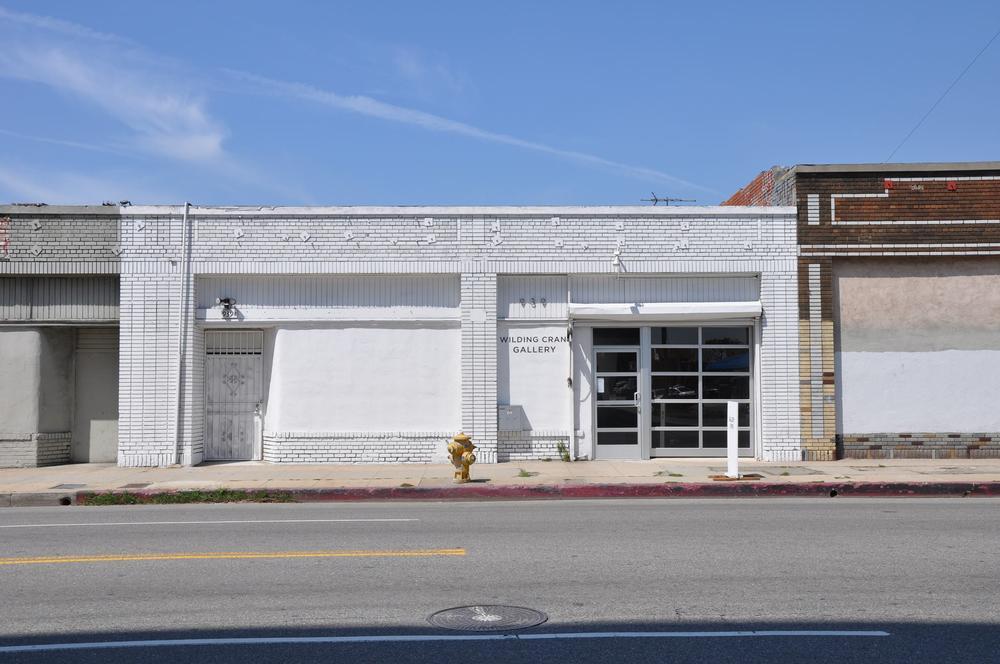
2. Wilding Cran Gallery (and The Beignet Truck) in LA
This city is one of my top day trips because there is so much to see, do and experience here! In addition, to make life easy, the Amtrak Pacific Surfliner train from San Diego to Union Station runs around $35–40 if you don't feel like driving on your day trip!
Downtown was buzzing, cars, crosswalks, that constant city hum, but when I stepped into Wilding Cran Gallery, everything went still. White walls, natural light, and space to actually breathe between pieces. I think it's the best way to find stillness in such a large city!
The exhibits change often, but the tone remains the same: bold, intimate, carefully curated. When I visited, the show focused on photographs that made me pause. I saw minimalist pieces that said more than they seemed.
The gallery is small, but that’s part of the magic. I didn't feel rushed. The staff was kind and happy to answer questions.
- Location: Los Angeles, California, in the Arts District of downtown LA
- Map & Directions
What I loved best:
Luckily I also spotted The Beignet Truck parked near the Arts District. I think it's one of the coolest mobile treats roaming the streets of Los Angeles. I ordered a fresh batch of classic beignets, pillowy, golden, and covered in a snowstorm of powdered sugar. The first bite was warm and airy, sweet in the perfect understated way.
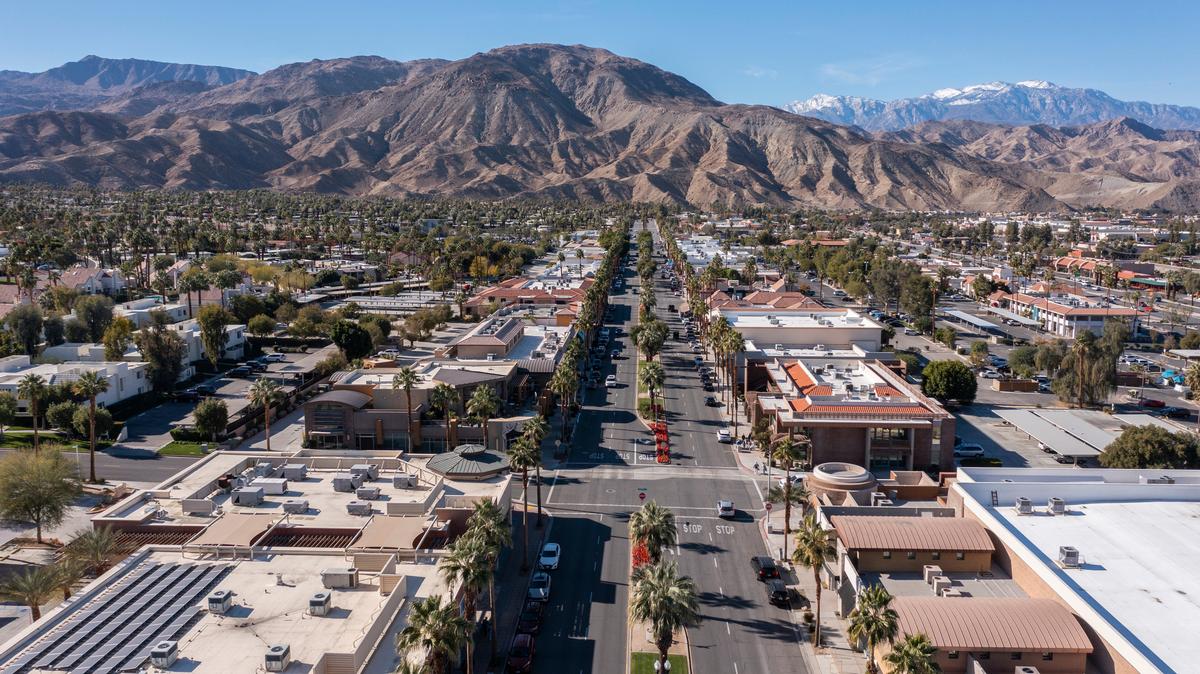
3. Palm Desert
This is one of my favorite day trip escapes in Southern California, tucked just east of Palm Springs in the heart of the Coachella Valley. Why? I think it's a vibrant desert gem where every visit feels like a mix of relaxation, adventure, and spectacular scenery.
I love starting the morning at Living Desert Zoo & Gardens, which is one of the coolest family-friendly attractions around. Walking through desert habitats from around the world while spotting giraffes and cheetahs always feels like a brilliant idea for an exciting outing.
Main Street–style shopping on El Paseo is another highlight for me. This stylish boulevard is sometimes called the “Rodeo Drive of the Desert,” filled with boutiques, galleries, and hidden gems that make wandering both joyful and inspiring.
We often spend the afternoon hiking one of the nearby trails, like the Bump and Grind Trail, where the views of the valley are absolutely spectacular. It’s affordable fun that feels adventurous and rewarding without being too far from town.
- Location: Southern California, in the Coachella Valley of Riverside County, east of Palm Springs
- Map & Directions
For me, Palm Desert is underrated compared to its famous neighbor Palm Springs, but that’s part of its magic. Whether you’re planning a romantic weekend, a family getaway, or just a quick desert escape, Palm Desert always feels like the best mix of sunshine, cool culture, and joyful desert energy.
What I loved best:
The public art scattered the town is my favorite highlight - murals, sculptures, and vibrant installations that make every corner feel alive and creative.

4. Environmental Nature Center
This is one of my favorite hidden gems in Orange County, and honestly one of the best spots for a joyful and affordable day trip. Just minutes from the beach, it feels like a completely different world filled with lush greenery and vibrant wildlife.
I love that the center spans 5 acres of unique ecosystems, from coastal sage scrub to redwood forests. Walking the trails is such a cool experience—you can wander from one environment to another in just minutes, which makes it feel both unusual and exciting.
We often come here for a peaceful escape, and it’s especially magical for families. Kids absolutely love the hands-on exhibits, butterfly house, and the chance to spot lizards, birds, and native plants up close. It’s an underrated way to connect with nature while still being in the heart of Newport Beach.
Another brilliant part of the center is its focus on sustainability. The buildings themselves are eco-friendly and inspiring, making it a unique educational stop as much as it is a relaxing one.
- Location: Newport Beach, California, in Orange County near the Upper Newport Bay Nature Preserve
- Map & Directions
What I loved best:
One of my favorite spots is the stunning butterfly house in the warmer months—it’s such a vibrant and joyful place where the colors feel like they belong in a dream. I always end up taking the most amazing photos there.

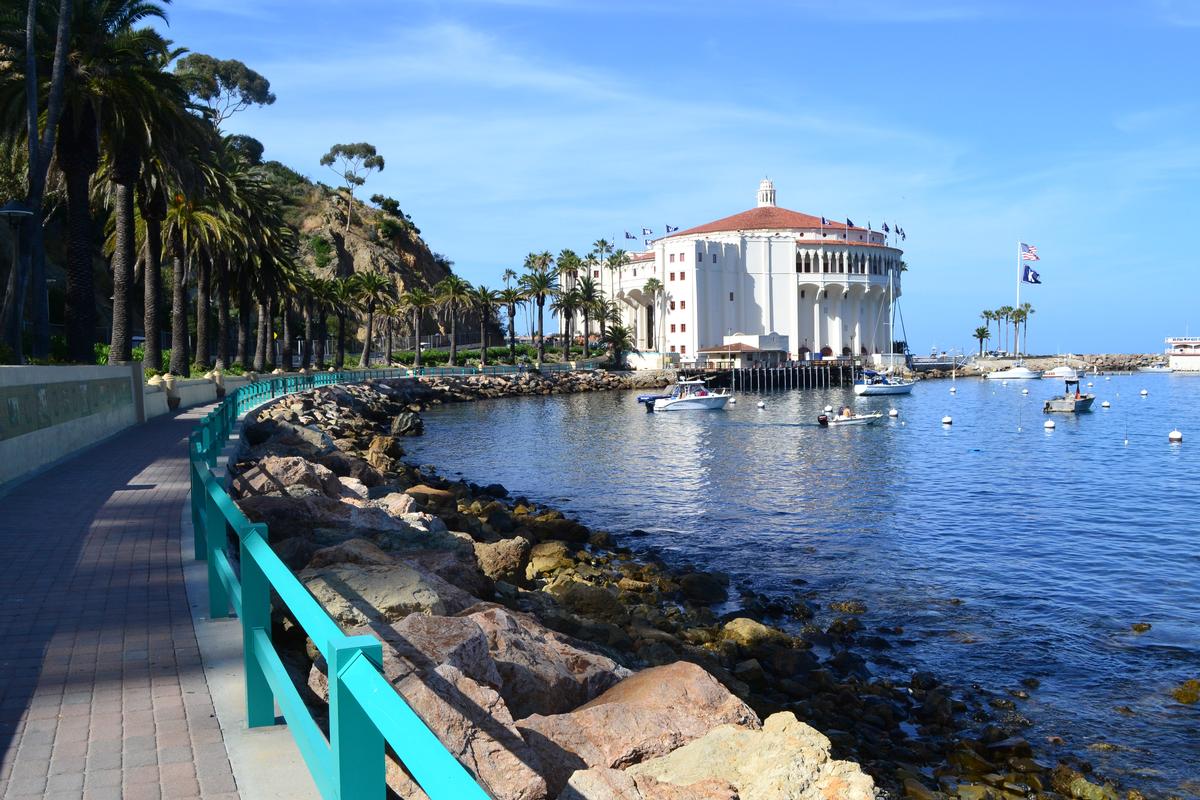
5. Catalina Island
This island was one of the most spectacular and exciting day trips from Southern California, sitting just about an hour off the coast by ferry from Long Beach, Newport Beach, or Dana Point. Every time I go, I feel like I’ve discovered a hidden Mediterranean gem right in California’s backyard.
Arriving in Avalon is a dream ...the harbor, boats, and the iconic Catalina Casino create the coolest first impression. Strolling along Crescent Avenue, we often pop into little shops, grab ice cream, or enjoy a waterfront café with amazing views.
From Long Beach, I caught the Catalina Express ferry. Round-trip ferry tickets run around $80, and cars are limited on the island (most people get around by golf cart, bike, or on foot).
The ferry ride to Catalina felt like a portal. One hour across the channel, and the mainland faded into memory.
One of my favorite adventures here is renting a golf cart to explore the hillsides above town. The views of the Pacific are absolutely spectacular, and it’s such a joyful and unique way to see the island.
For something a little unusual, the Descanso Beach Club is perfect for lounging on the sand with a cocktail in hand—it feels romantic and vibrant at the same time. We’ve even tried zip-lining through the canyon, which was one of the most thrilling and underrated experiences I’ve had in SoCal.
- Location: Off the Southern California coast, about 22 miles southwest of Los Angeles in the Channel Islands
- Map & Directions
What I loved best:
Snorkeling or kayaking in the coves is pure magic. The marine life is so alive and colorful and best of all we enjoyed it without leaving California.
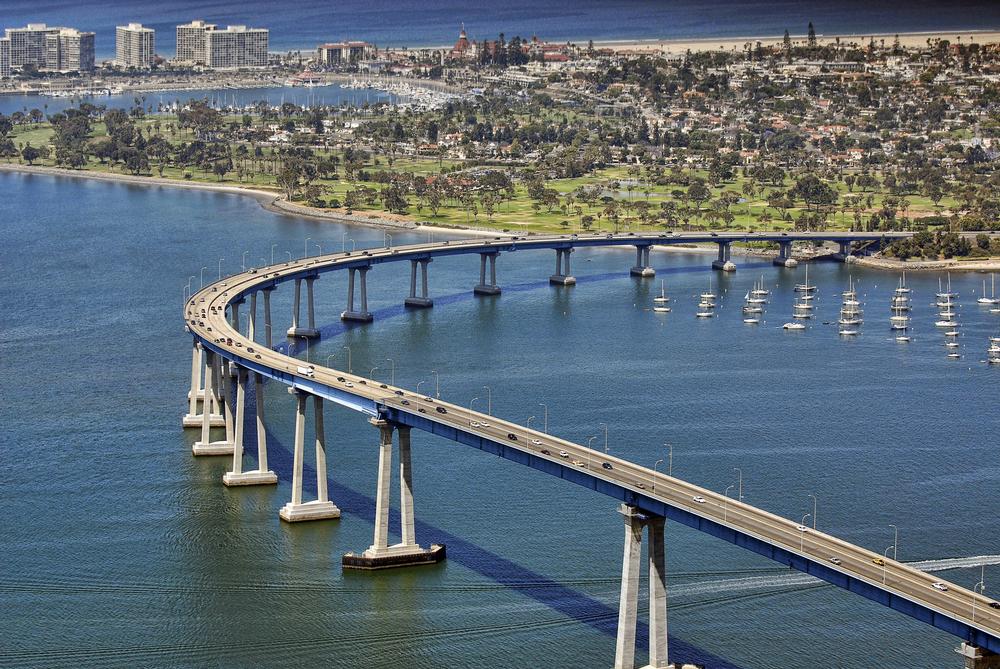
6. Coronado Island
This is one of my favorite SoCal day trips, sitting just across the bay from downtown San Diego. I've spent many nights here on the beach with my son and husband.
Every visit feels like stepping into a dreamy, hidden gem where the pace slows down and the coastal charm takes over.
I love starting the day at Coronado Beach, which is often ranked among the best in the U.S. The wide, sparkling shoreline is absolutely spectacular, with soft sand that glimmers thanks to natural mica. Walking along the water here always feels joyful and refreshing.
One of the coolest and most iconic landmarks is the Hotel del Coronado. This Victorian-style beauty feels straight out of a storybook, and whether we’re grabbing brunch, exploring the historic lobby, or simply lounging by the ocean, it always feels like a brilliant idea to stop by.
We often rent bikes and cruise down the Silver Strand, which connects Coronado to Imperial Beach. The views are vibrant, with ocean on one side and bay on the other—it’s one of the most unique and underrated rides in Southern California.
Foodies will find great choices, from refined coastal cuisine at Bluewater Boathouse Seafood Grill, set on the bay with panoramic views, to elegant dining at Peohe’s, known for its fresh seafood and sushi with skyline vistas. For casual bites, try Clayton’s Coffee Shop for a classic diner breakfast.
We like to stay at 4-star Hotel del Coronado for two days, a famous beachfront resort since 1888.
- Location: Southern California, in San Diego County, across the bay from downtown San Diego on a peninsula connected by the Silver Strand
- Map & Directions
What I loved best:
Orange Avenue is my favorite spot to wander. With boutique shops, local cafés, and small galleries, it has such a cool small-town vibe while still being just minutes from downtown San Diego.

7. Crestline
This is one of my favorite hidden gems in the San Bernardino Mountains, just about 20 minutes from Lake Arrowhead and less than two hours from Los Angeles. It’s the kind of underrated mountain town that feels both cozy and exciting, making it a spectacular choice for a quick getaway.
I love spending time at Lake Gregory, which is the heart of Crestline. The lake is perfect for swimming, kayaking, or just enjoying a joyful picnic on the shore. In the summer, the waterpark with inflatable slides and obstacle courses makes it an absolute favorite for families.
We often wander through the small but vibrant downtown, where local cafés, antique shops, and unusual boutiques create a cool, laid-back atmosphere. My favorite stop is grabbing a warm drink and a sweet treat before heading back out to explore the trails.
One of the best parts about Crestline is how affordable it feels compared to other mountain towns, yet the beauty is just as magical. The pine-covered hills, crisp mountain air, and occasional snow in the winter make it feel like a dream escape without going too far.
When hunger strikes head to The Stockade, known for hearty American fare and rustic charm.
If you’re staying overnight, 4-star Sleepy Hollow Cabins & Hotel offers a blend of rustic comfort and modern amenities just steps from Lake Gregory. For a more romantic escape, The 3-star North Shore Inn provides cozy rooms, fireplaces, and peaceful forest views perfect for a mountain retreat.
- Location: Southern California, in the San Bernardino Mountains of San Bernardino County, northwest of Lake Arrowhead
- Map & Directions
What I loved best:
I especially enjoy hiking around the area, where hidden trails lead to peaceful spots with spectacular views of the valley below. It’s such a brilliant idea for anyone who loves nature but doesn’t want the big crowds.
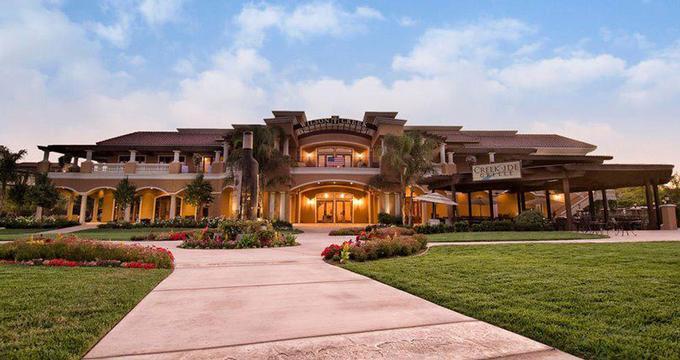
8. Wilson Creek Winery
This is one of my absolute favorite wine country escapes in Southern California. Just a short drive from San Diego or Orange County, this spectacular winery is a hidden gem tucked among rolling vineyards and golden hills.
I love the vibrant, welcoming atmosphere here—it feels joyful the moment you step onto the grounds. The gardens and outdoor patios are absolutely beautiful, and sipping wine under the sunshine feels like a dream.
One of the coolest things about Wilson Creek is their famous almond sparkling wine. It’s unique, refreshing, and easily one of the best signature pours I’ve tried in Temecula. We always grab a bottle to take home because it makes any celebration feel extra special.
The tasting room is lively and fun, perfect for both first-time visitors and seasoned wine lovers. I think it’s one of the most underrated spots for a family-friendly winery experience too, since they welcome kids and even pets, which makes the whole place feel more inclusive.
- Location: Southern California, in Temecula Valley Wine Country of Riverside County, southeast of Los Angeles
- Map & Directions
We often pair our wine tasting with a stop at their Creekside Grille. The farm-to-table menu is filled with fresh, flavorful dishes that make the experience even more amazing.
What I loved best:
Sitting on the patio with a glass of wine and a delicious meal is honestly one of my favorite ways to spend a weekend afternoon.

9. Santa Ana
Ready for a lively city getaway? I loved exploring this vibrant, artsy Orange County hub just inland from the coast. Every time I come here, I’m struck by how many layers it has—from its cultural landmarks to its vibrant food scene.
I drove about 40 minutes southeast from Los Angeles to Santa Ana. The road slid into the heart of Orange County’s urban core.
We wandered through the historic downtown, and I loved the way the old architecture blends with colorful murals and modern coffee shops. It gave the area such a cool, creative vibe that made simply walking the streets an experience in itself.
I also thought it was unusual to find so many hidden gems in the dining scene. From authentic Mexican street food to innovative gastropubs, we sampled dishes that felt both comforting and exciting, and every bite told a story of Santa Ana’s rich cultural mix.
- Location: Southern California, in Orange County, southeast of Los Angeles and near the Santa Ana River
- Map & Directions
What I loved best:
One of my favorite stops is the Bowers Museum. I could spend hours exploring its exhibits, which range from global art to California history. It always feels like a joyful journey around the world without leaving the city.
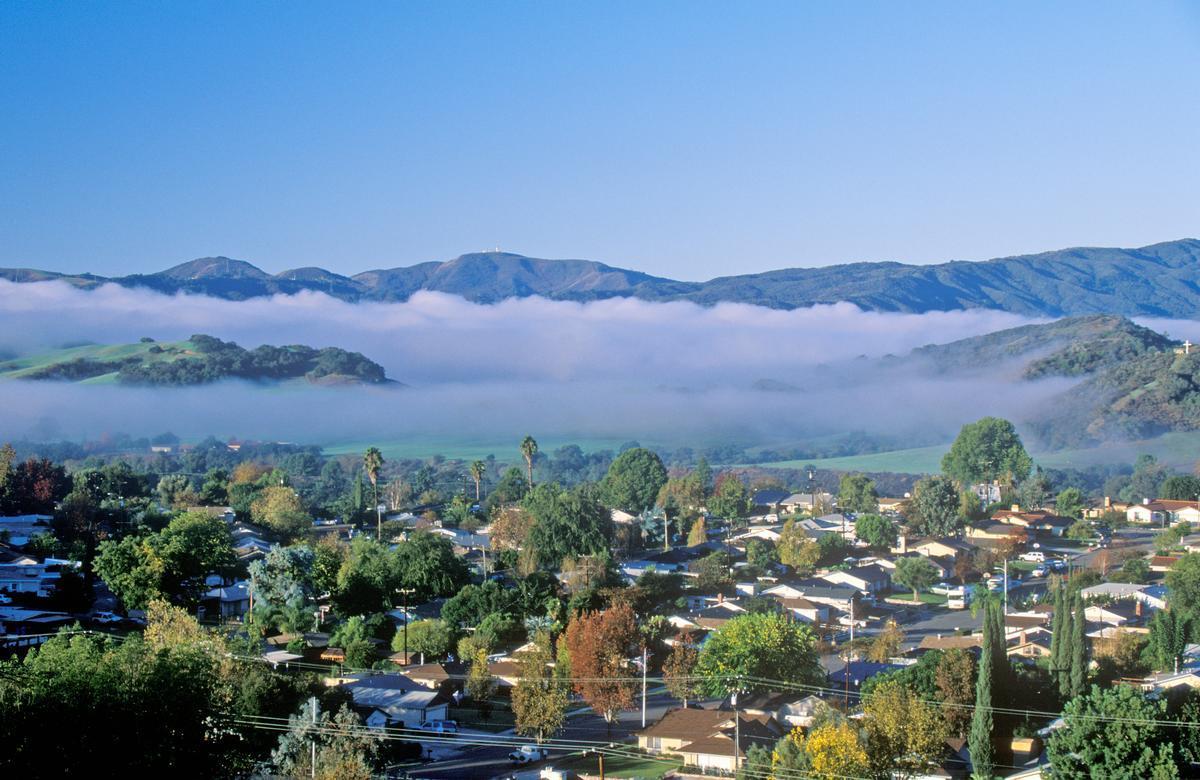
10. Ojai, California - 1 hour 50 min from LA
I think this place is one of the absolute best hidden gems for a weekend or even just a dreamy day trip. Nestled in a valley surrounded by mountains, it feels both peaceful and vibrant—like a joyful little world of its own.
From LA, it was a 1 hour 50 min drive southeast to Ojai (nicknamed Shangri-La), a town of about 7,500 nestled in a scenic valley. Downtown’s Spanish-style arcades, built in 1917, gave the town its distinctive look.
We started in the charming downtown filled with art galleries, boutique shops, and cozy cafés. I loved the unique vibe here—everything feels locally inspired and full of character, and it’s honestly one of my favorite places to just wander. The arcade-style Spanish architecture makes it even more interesting and unusual compared to other small towns in California.
Ojai is famous for its orange groves, and sipping fresh-squeezed juice while enjoying the mountain views was pure magic. We also explored the Saturday farmers market, which felt so alive with color and flavor—it was an exceptional highlight of our day.
For those seeking relaxation, Ojai is also known for its spas and wellness retreats, and I thought that made it a brilliant idea for either a romantic escape or a soulful solo trip. Affordable, beautiful, and inspiring, Ojai has this unusual magic that makes me want to return again and again.
The popular place to eat in Ojai is Olivella that offers a refined, farm-to-table experience with California wines to match, while Farmer and the Cook brings an organic, bohemian charm that perfectly captures Ojai’s easygoing spirit.
- Location: Southern California, in Ventura County, nestled in the Ojai Valley east of Ventura and north of Los Angeles
- Map & Directions
Check prices at Ojai Valley Inn ($295), a 1923 resort blending luxury with rustic charm.
What I loved best:
My favorite part, though, was hiking in the surrounding trails. The scenery is spectacular, and catching the “pink moment” at sunset, when the Topatopa Mountains glow in a rosy light, felt like a once-in-a-lifetime experience. It’s honestly one of the coolest natural shows I’ve ever seen.

11. Newport Beach
Stretching along a gorgeous slice of the Orange County coastline, this is one of the most inviting beach destinations I’ve ever visited, and I think it’s one of the absolute best coastal getaways near Los Angeles.
To me, Newport Beach feels like the absolute best mix of coastal luxury and laid-back surf culture. Just south of Los Angeles, it offers miles of sandy shoreline, a sparkling harbor, and that spectacular SoCal sunshine. I loved starting mornings with a walk along the Newport Pier, watching surfers catch waves as the ocean breeze rolled in fresh and cool.
I drove about 30 minutes from inland Orange County for a day trip to Newport Beach.
We found that Newport Beach had something for everyone. Families enjoyed the wide stretches of sand at Balboa Peninsula, while adventurers rented kayaks or paddleboards to explore the harbor. I thought it was especially cool to take the ferry over to Balboa Island, where charming cottages, boutiques, and frozen banana stands created a joyful, small-town vibe right in the middle of the city’s bustle.
What stood out to me most was the energy of the harbor itself. Yachts, sailboats, and fishing boats all moved in and out, giving the waterway a constant buzz of activity. At the same time, I liked how easy it was to slip into quieter spots—whether biking along the boardwalk, and strolling the Back Bay trails. The variety made Newport feel both exciting and restorative.
- Location: Southern California, in Orange County, along the Pacific Coast between Huntington Beach and Laguna Beach
- Map & Directions
What I loved best:
Watching the sunset from Corona del Mar State Beach was one of my favorite highlights!

12. Torrance
Tucked just inland from the Pacific, this is one of the most underrated coastal cities I’ve explored in Southern California, and I think it's one of the best hidden-gem beach destinations near Los Angeles. Why? I loved how Torrance Beach stretched wide and calm, offering a spectacular spot to relax without the heavy crowds of Santa Monica or Venice.
We drove about 30 minutes south from downtown Los Angeles to Torrance. The road led past city neighborhoods and into a quieter coastal stretch of the South Bay that completely won me over.
We found that the absolute best part of Torrance was its variety. By day, we could lounge on the sand or bike along the coast, and by evening, we were exploring Torrance’s food scene, which I thought was one of the most underrated in Los Angeles. From authentic Japanese dining in Torrance’s Little Tokyo to craft breweries and cozy cafés, the city offered a joyful range of flavors that made each meal memorable.
What stood out to me most was the balance between city convenience and coastal calm. I liked that Torrance wasn’t overly touristy—it had that local, easygoing vibe while still being close to big attractions. Shopping at Del Amo Fashion Center, one of the largest malls in the U.S., made for a cool change of pace after a morning by the ocean.
- Location: Southern California, in southwestern Los Angeles County, in the South Bay region near the Pacific Coast
- Map & Directions
What I loved best:
My favorite moment was watching the sunset from Torrance Beach, with the lights of the Santa Monica Mountains faintly glowing in the distance.
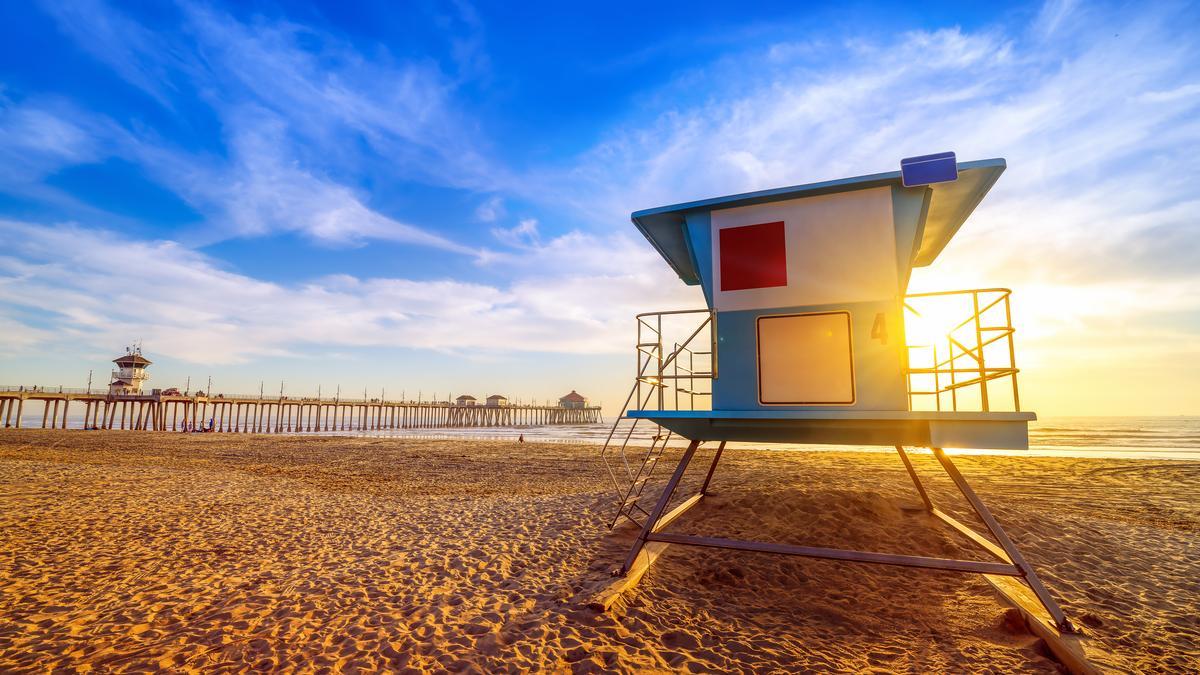
13. Huntington Beach - one-hour drive south from LA
I found this beach town to be one of the best day trips you can take when you’re craving ocean vibes without going too far. Known as “Surf City USA,” this gem has such a joyful, laid-back energy that makes every visit feel like a weekend getaway, even if I’m only there for the day.
From Los Angeles, it was about a one-hour drive south to Huntington Beach, a coastal city of around 200,000. We stayed at the 4-star Waterfront Beach Resort.
At the International Surfing Museum ($3 admission), I saw info about Duke Kahanamoku and the roots of surf culture. It reminded me of my 6 years living in Hawaii and the Duke Kahanamoku Statue in Waikiki.
What I love most is the wide stretch of sand and the lively pier that feels both classic and exciting—there’s nothing like grabbing a coffee, strolling to the end, and watching surfers ride the waves. It’s honestly one of my favorite underrated spots near LA because it's so relaxing but you have a lot to do if you get restless.
We spent the afternoon lounging by the water, but Huntington Beach also has some of the coolest bike paths along the coast.
If you want something more unusual, the Bolsa Chica Ecological Reserve nearby is a brilliant idea for a walk through wetlands filled with birds and peaceful trails.
- Location: Southern California, in Orange County, along the Pacific Coast between Seal Beach and Newport Beach
- Map & Directions
What I loved best:
I thought the atmosphere was both family-friendly and romantic...you can picnic on the beach, play volleyball, or end the evening around a bonfire as the sun sets. That glowing sky over the Pacific is absolute magic, and it’s the kind of moment I always want to capture in my photos.
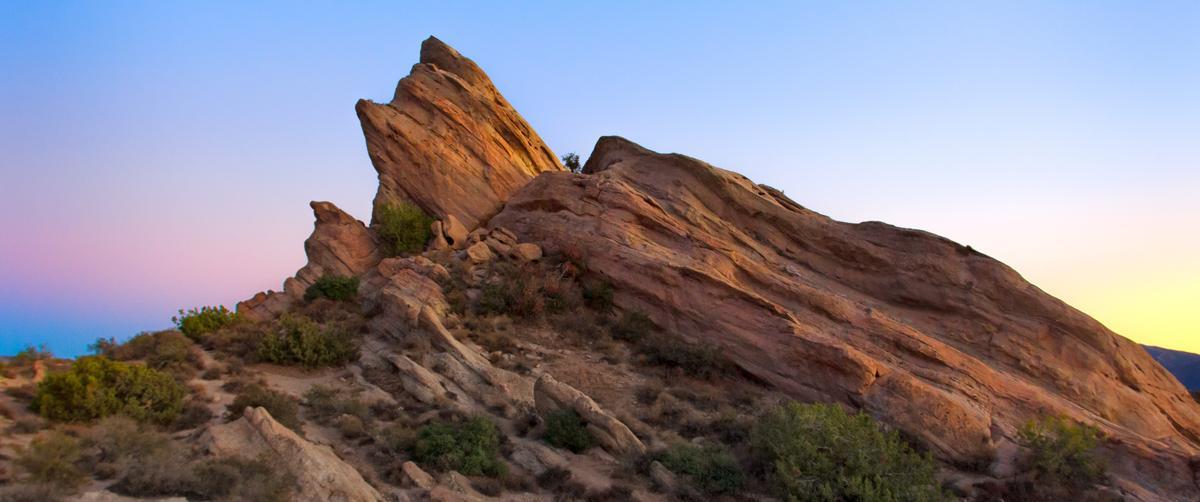
14. Santa Clarita - 35-minute drive north from LA
I think this is one of the coolest and most underrated day trip destinations. Tucked into the hills of northern LA County, it feels like a joyful mix of thrilling adventures and relaxing escapes, which makes it perfect for both family fun and a romantic weekend vibe that completely won me over.
From downtown Los Angeles, it was about a 35-minute drive north to Santa Clarita.
What stood out to me first was Six Flags Magic Mountain. This theme park is legendary for some of the best roller coasters in the world, and it’s honestly an absolute dream for thrill-seekers. We spent hours racing from ride to ride, and I couldn’t stop smiling from the excitement.
But Santa Clarita isn’t just about adrenaline. I loved discovering the hiking trails in Placerita Canyon and Vasquez Rocks. The scenery is spectacular and unusual, with dramatic rock formations and peaceful nature that felt like a hidden gem so close to the city. It’s one of my favorite places to take photos because every view looks cinematic.
Downtown Newhall was another highlight for me. The area has a vibrant energy, with cool art installations, affordable eateries, and unique shops that make it such an interesting stop. I thought the blend of old Western history and modern creativity was truly exceptional.
- Location: Southern California, in northern Los Angeles County, in the Santa Clarita Valley north of Los Angeles
- Map & Directions
What I loved best:
We ended our day watching the sunset over the golden hills, and it was pure magic.
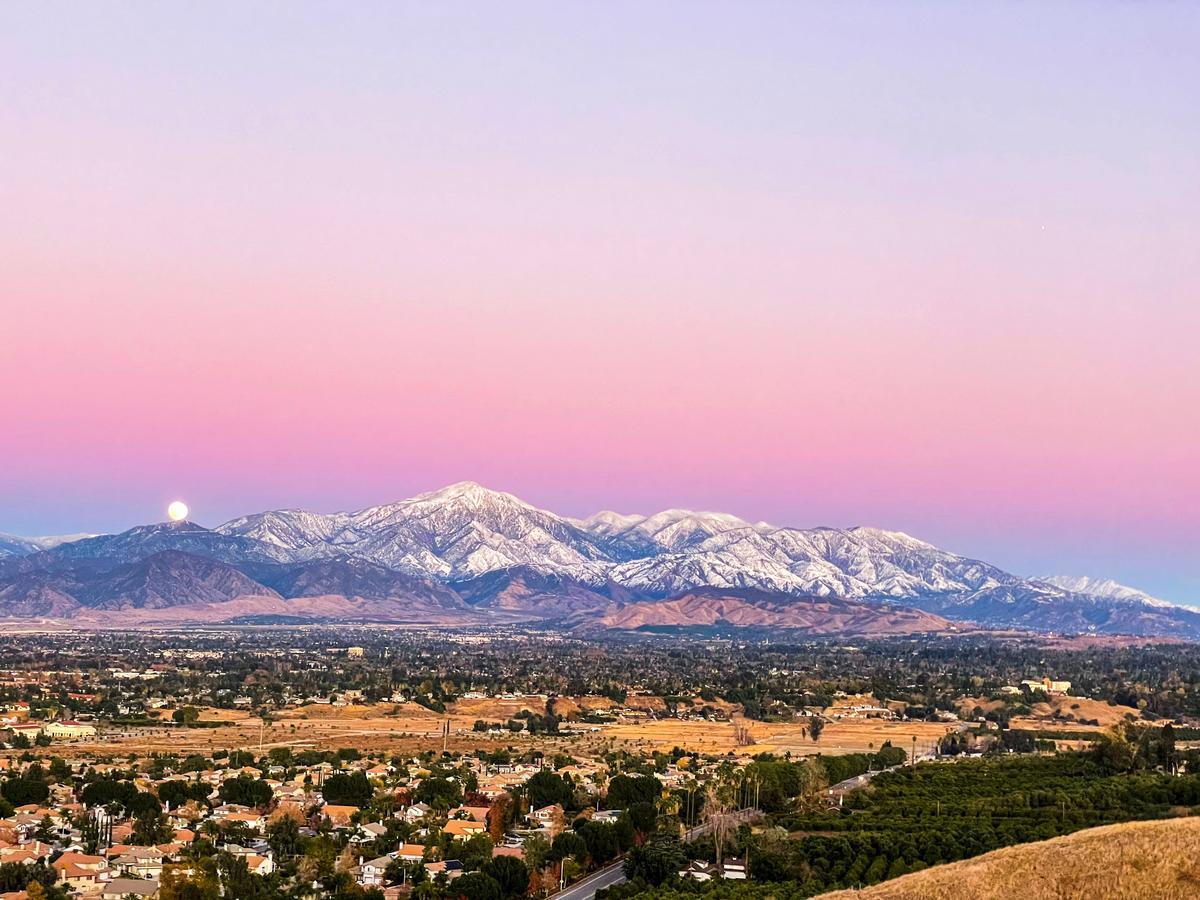
15. Redlands - 1 hour and 10-minute drive east from LA
I found Redlands to be one of the most underrated gems for a quick day trip. Nestled near the San Bernardino Mountains, this cool little city has a charm that makes it feel like a joyful mix of history, culture, and small-town magic.
From Los Angeles, it was about a one-hour 10-minute drive east. Our day trip from LA turned into an overnight trip and we stayed at the historic Ayres Hotel Redlands ($159), which blended comfort with a nod to local history.
What I loved right away was the tree-lined streets and the unusual Victorian-style homes that made me feel like I’d stepped back in time. We wandered through the historic downtown, which is filled with unique boutiques, affordable cafés, and some of the best locally owned restaurants I’ve discovered on a getaway near LA.
My favorite stop was the Redlands Bowl, a dreamy outdoor amphitheater where they host free concerts in the summer—it’s such a brilliant idea for an evening out and feels like one of the coolest community traditions. Seeing it in person reminded me why this city is so special.
We also spent time at Prospect Park, which was so peaceful and filled with vibrant orange groves. The scent of citrus in the air was amazing, and it felt like a romantic yet family-friendly escape at the same time. The San Bernardino mountains in the distance just added to the spectacular backdrop.
Redlands has a quietly thriving food scene filled with spots that showcase its small-town charm and local flavors. Caprice Café offers an upscale yet cozy experience right in the heart of downtown, while Darby’s American Cantina is perfect for laid-back bites and craft drinks on a warm Inland Empire evening.
- Location: Southern California, in San Bernardino County, east of Los Angeles near the San Bernardino Mountains
- Map & Directions
What I loved best:
Another highlight was the University of Redlands campus—it’s one of the most beautiful college grounds I’ve ever walked through, and I thought the architecture was both impressive and inspiring.
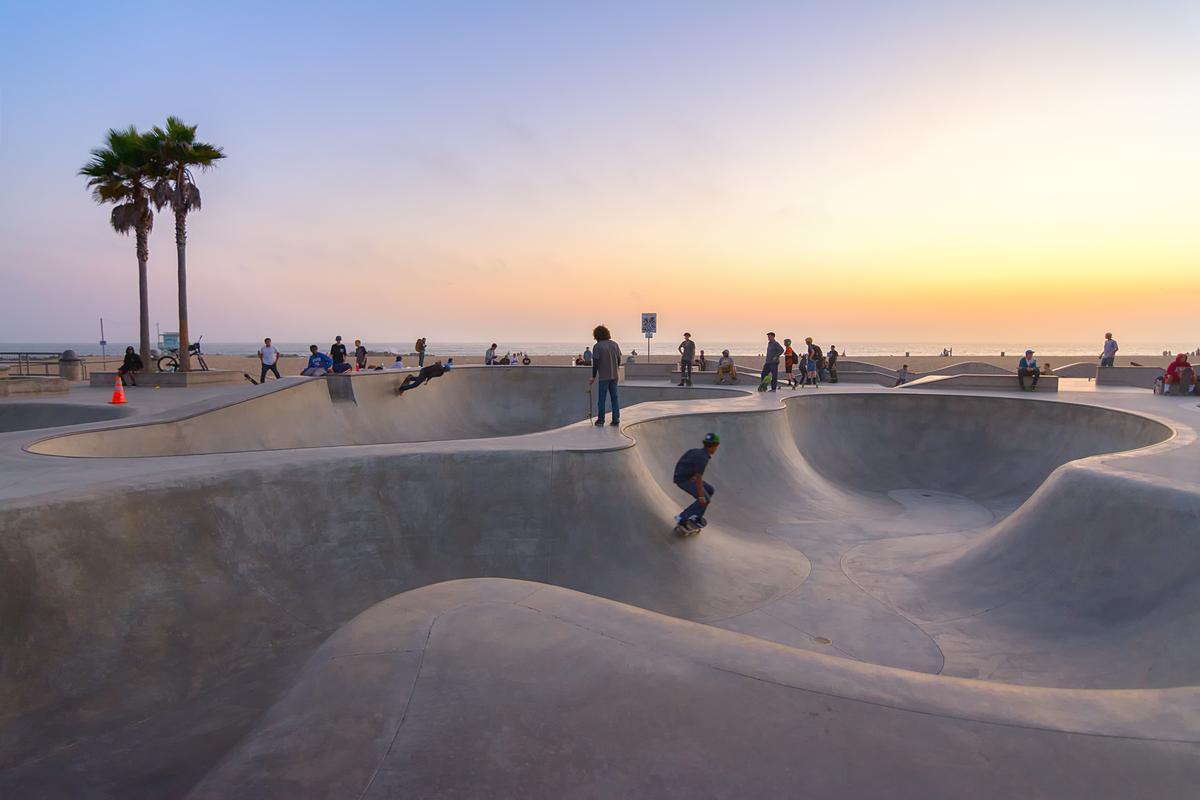
16. Venice Beach - 20 minutes west of downtown Los Angeles
Only about 20 minutes west of downtown Los Angeles, this is easily one of the coolest and most vibrant spots for a quick escape. To me, it’s a hidden gem of creativity, energy, and oceanfront fun that feels both unusual and exciting every time I visit.
We started at the Venice Boardwalk, which is one of my favorite places for people-watching. Street performers, colorful murals, and quirky shops gave the whole area an awesome and joyful vibe. It’s truly one of the most unique beach scenes in California, and I always find something new and interesting here.
Walking along the beach, I loved the wide stretch of sand and the waves filled with surfers. Muscle Beach was buzzing with energy, and seeing the outdoor gym in action felt like stepping into a piece of California history—it’s such a cool and underrated landmark.
Another highlight for me was strolling through the Venice Canals. This unusual neighborhood feels like a romantic European dream tucked into LA, with charming footbridges, calm waters, and beautiful homes that make it one of the city’s best-kept secrets. It’s the kind of spot that feels magical at sunset.
The most popular place to eat in Venice Beach is Gjelina, but note that you’ll need to book a table well in advance...it’s one of L.A.’s hardest reservations to snag. No worries, though; Venice is a foodie’s dream, packed with laid-back yet inventive spots you won’t find anywhere else. The Butcher’s Daughter is a local favorite for plant-forward fare and great people-watching, while Great White near the boardwalk nails the beach-brunch vibe.
- Location: Southern California, in western Los Angeles, along the Pacific Coast just south of Santa Monica
- Map & Directions
What I loved best:
We wrapped up our day with a walk down Abbot Kinney Boulevard, where the boutiques, cafés, and art galleries created an exceptional mix of style and culture.

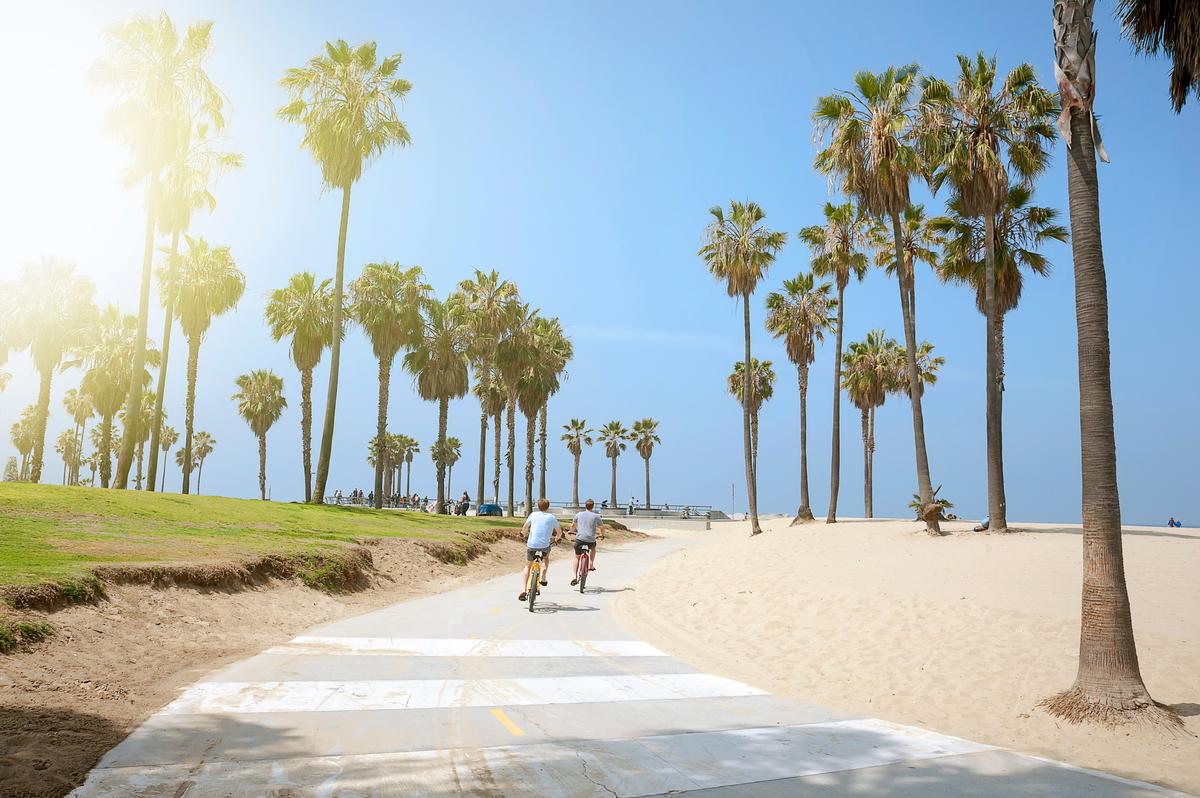
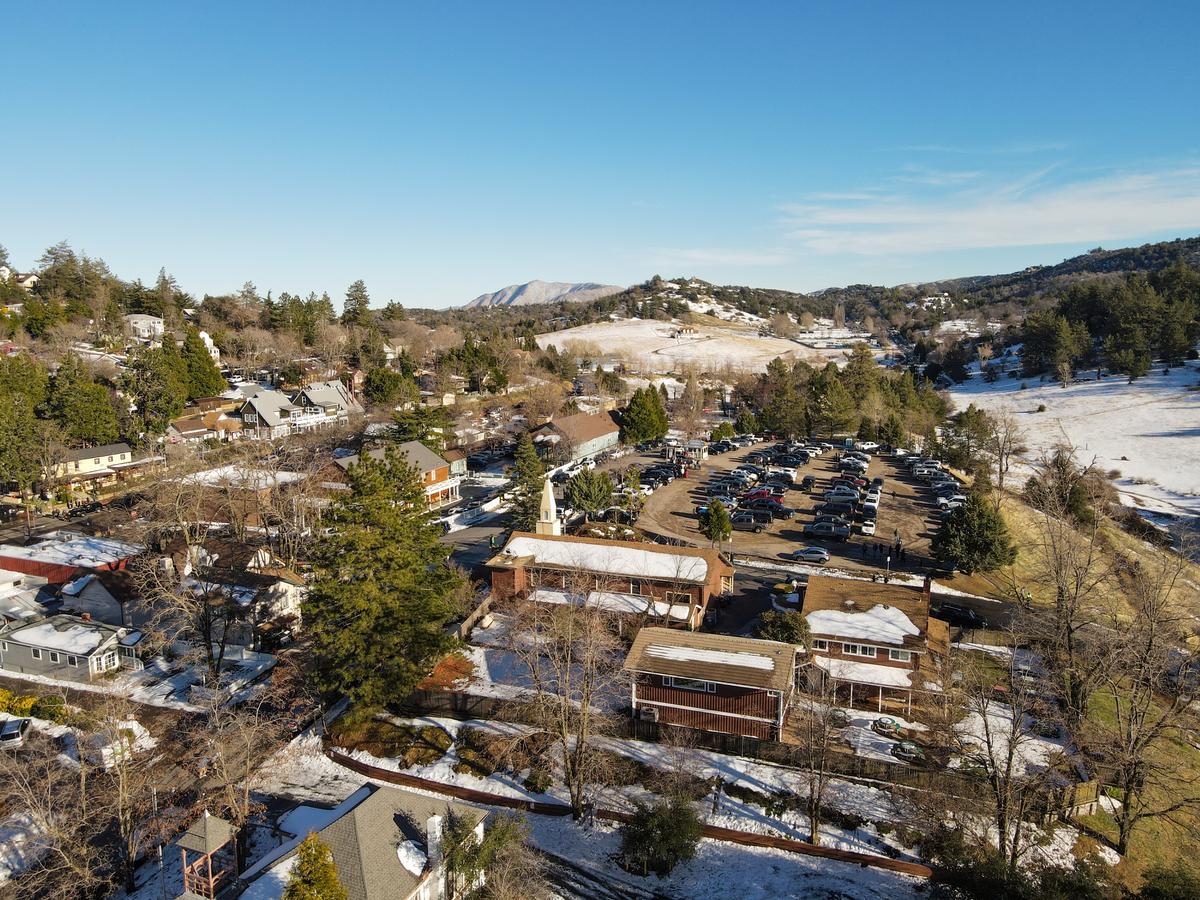
17. Julian
This is one of the most delightful and underrated day trips in Southern California—nestled in the Cuyamaca Mountains just about an hour east of San Diego which makes it a perfect day trip from the city. It’s a charming slice of history wrapped in fresh mountain air and abundant pine trees, the perfect escape from city life that completely won me over.
I always make a point to pop into the Julian Pie Company—this place is a true hidden gem and absolutely my favorite stop in town. Their legendary apple pies are warm, cinnamon-spiced, and melt-in-your-mouth delicious, earning their spot as the best treat you can enjoy on a cool mountain afternoon.
Strolling along Main Street is such a joyful experience, too. Wooden storefronts, antique shops, and cozy cafés like Julian Café & Bakery line the street, and I always find something cool and unique to admire at every turn.
You can spend two or three hours panning for gold at the Eagle Mining Company (our son loves this!) or wandering through one of the historic, unusual old mines nearby. It’s an affordable and exciting glimpse into the region’s Gold Rush past, perfect for both romantic day trips and family outings.
- Location: Southern California, in the Cuyamaca Mountains of San Diego County, east of San Diego
- Map & Directions
If you’re staying overnight, Orchard Hill Country Inn, offers elegant comfort and peaceful views of the surrounding hills. For a cozier stay, 2-star Julian Gold Rush Hotel, a lovingly restored 1890s landmark, provides historic charm right in the heart of downtown.
What I loved best:
In winter, this place becomes even more magical—the most unexpected place in Southern California to see snow. I’ve cozied up by a fire with a slice of pie in hand, then stepped outside to hike trails offering spectacular mountain views in the crisp air.

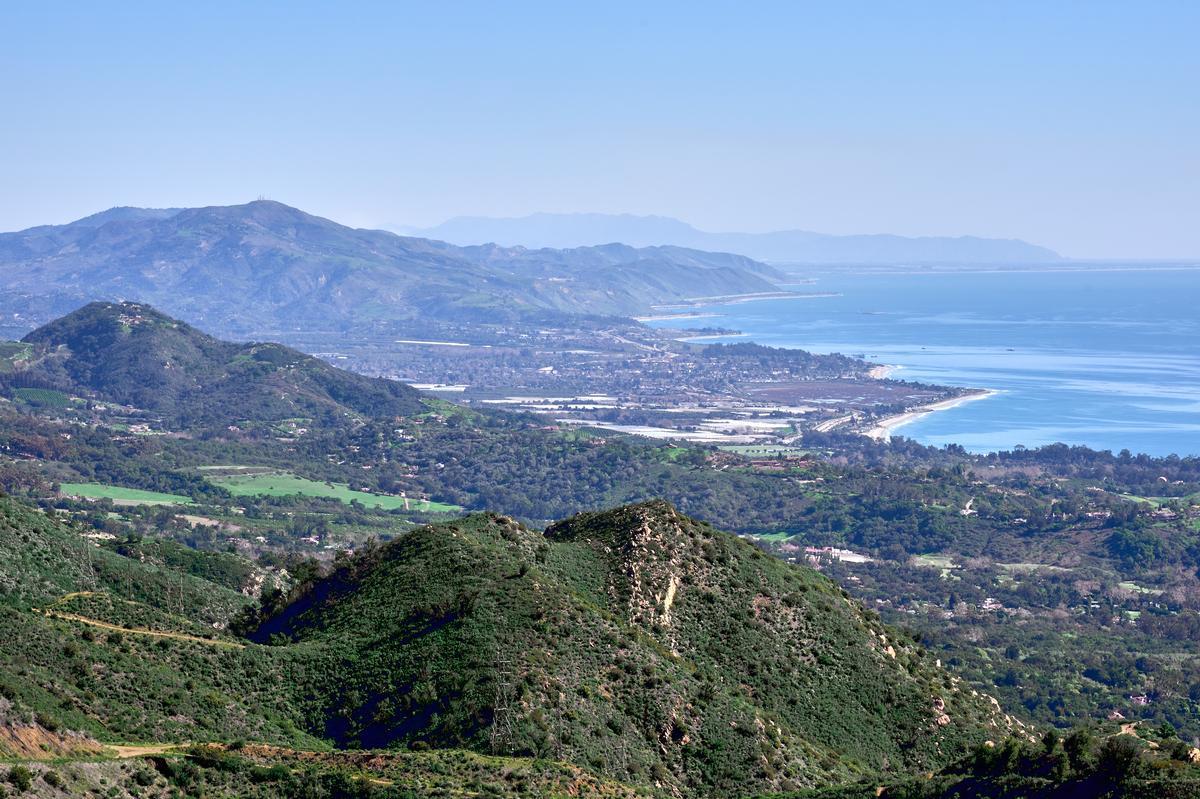
18. Carpinteria
This is one of my absolute favorite underrated beach towns along the Central Coast and one of the best must-visit places just south of Santa Barbara. This hidden gem has such a laid-back and joyful vibe that makes it perfect for a weekend getaway or even just a dreamy day trip.
I love starting the morning at Carpinteria State Beach, known for having some of the safest and most spectacular swimming spots in Southern California. The sand is soft, the waves are gentle, and it always feels like the best place to relax with family or friends.
We often wander through downtown Carpinteria, where the coolest cafés, antique shops, and local boutiques line Linden Avenue. It’s such a vibrant yet affordable place to spend an afternoon, and I always seem to find a hidden treasure or two.
One of the most unique features here is the Carpinteria Bluffs Nature Preserve. Walking the trails overlooking the Pacific is an amazing experience, and I especially love stopping at the seal rookery—it’s one of those unusual and unforgettable things you can only find here.
Food is a highlight here, such as locally inspired dishes at Corktree Cellars Wine Bar & Bistro. For casual dining, grab breakfast at Lucky Llama Coffee House, a beach-town favorite where you should try one of its acai bowls and espresso, or enjoy ocean views with fish tacos at Padaro Beach Grill.
If you’re staying overnight, 4-star Sanctuary Beach Resort offers relaxed luxury and coastal charm just a short walk from the sand.
- Location: Southern California, in Santa Barbara County, along the Pacific Coast just southeast of Santa Barbara
- Map & Directions
What I loved best:
For me, Carpinteria is one of the best day trips in Southern California because it's relaxing and unique!
In the fall, I thought that California Avocado Festival was a brilliant idea for a fun visit, with live music, delicious food, and a festive, family-friendly atmosphere that feels like pure small-town magic.

Booking Checklist
1. Book Your Flight - I use Expedia because I like their mobile app with my itinerary. They've helped me re-book flights on many occasions. Once you reach their Gold tier, support is especially good.
2. Book Your Hotel - I use Booking.com or Expedia, depending on my destination.
3. Book Your Rental Car - I use Expedia.
4. Book your tours on Viator or Get Your Guide.
5. If you are planning to visit more than three national parks in the next 12 months, buy the America the Beautiful Pass.
